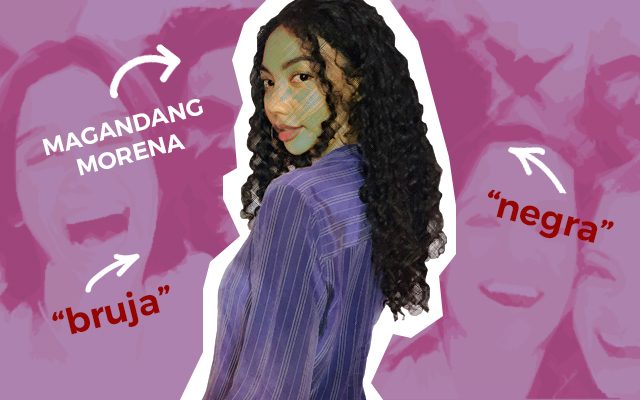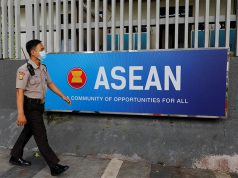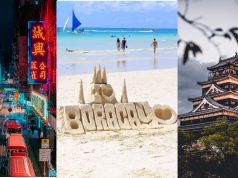
Asia Jackson, a 24-year-old Filipino-American TV actress, has brought to light the culture of skin color discrimination in the Philippines after she shared personal experiences of being bullied for having dark complexion and curly hair.
In a Twitter thread, Jackson related how when living in the Philippines she was discriminated when she was younger and was called “negra” and “bruja” for her curly hair.
I was bullied for having dark skin when I lived in the Philippines. Everything I did, everywhere I went, it felt like I could never escape people’s harmful words. “Negra” was thrown at me everyday & it never stopped. (thread) #MagandangMorenx pic.twitter.com/gSfShn0ZYI
— Asia Jackson (@aasian) May 31, 2018
“Kids told me I couldn’t join their games because I was maitim. I couldn’t have a single conversation with anyone without someone mentioning how dark I was. Complete strangers called me ‘bruja’ because of my hair texture. Imagine the effects that all of this has on a child,” Jackson added in the thread.
Jackson has acted in American TV shows such as Speechless, Modern Family, and The Young and the Restless. She also has a beauty and lifestyle channel on YouTube that has over 200,000 subscribers.
In 2016, she started a social media campaign called “Magandang Morena” or “beautiful brown skin” that aims to celebrate the diversity of color in the Philippines, which includes brown or tan skinned Filipinos.
She tagged the GMA show Nita Negrita and several ads for whitening products on her May 31 post as among the reasons why many Filipinos feel “ashamed” of their natural complexion.
“A multi-billion dollar skin whitening industry exists because of it. Because of an entertainment industry full of light-skinned half Filipinos and millions of dollars being spent on whitening product ads & commercials, tan and brown Filipinos are made to feel ashamed of who they are,” Jackson explained.
While many showed support on Jackson’s stance, some appeared to take offense and reasoned that it’s the people’s “choice” whether they wish to be fairer or darker.
Excuse us. But we filipinos have a choice either what we gonna do about our skin.but it doesnt mean we dont like our natural color. #justsaying
— Mackie Morales (@leMACqueens) June 5, 2018
White people wants to be tanned and tanned people wants to be white. That's just who we are ?
— R E V E R I E ? (@roartheowl) June 6, 2018
Filipino public figures with colored complexions have also been targets of color discrimination, among which are Senator Nancy Binay, Miss Universe runner-up Venus Raj and TV host Bianca Gonzales.
Colonial origins
Several Filipinos who reacted to Jackson’s campaign looked to the country’s history to find the origins of Filipinos’ preference for whiter skin.
The preference for “white beauty” may have come from Spanish colonizers who associated dark-skinned Filipinos with poor laborers while those with lighter skin, being mixed-race Filipinos, are in the upper class.
“In other words, it was the Spaniards who brought us the idea that our culture and natural skin color were inferior to theirs,” an article on Filipiknow.net explained.
This was also echoed by a study called “Filipino Women and the Idealization of White Beauty in Films, Magazines, and Online” that discussed how the Western “light skin” beauty still appeared to be the “global standard” in films, TV shows, and other forms of media today.
“This shows how it is also linked to colonialism, where European ancestry was given a higher status than darker skinned people,” wrote Kristin Baybayan Renault, M.A. from the University of Wisconsin-Milwaukee.
“Since lighter skin is seen as higher status, minorities will use this as social capital, resulting in more access to education, housing, marriage, and job opportunities,” Renault added.
Aside from Spain, the Philippines was also colonized by the United States and Japan, whom were also fair or pale-skinned people.
Colorism depicted in literature
The influence of our conquerors toward skin color preference is also evident in Philippine literature that time, particularly in Jose Rizal’s Noli Me Tangere.
In the novel, brown or sun-kissed native Filipinos or Indios are often ridiculed, even those with mixed Spanish and Filipino descent like Crisostomo Ibarra and with high rank like Captain Tiyago.
Meanwhile, fair-skinned Spanish natives are deemed as respectable, regardless of background such as the fake doctor Don Tiburcio and his wife, socialite Donya Victorina.
Colorism in Asia
Based on other studies, the Philippines is not the only country heavily affected by the so-called colorism or the prejudice over skin tone color.
Many of the country’s neighbors, such as Taiwan, Malaysia, South Korea and China, have also invested into white or pale-skinned beauty, which tradition can be traced back to centuries-old history as well.









